The wearable market is growing and has a good growth trend in the next five years. From the data point of view, from 2015 to 2020, the shipment of wearable devices will increase from about 170 million units to 350 million units, of which the two types of products with obvious growth are smart watches and smart glasses.

Over the years, through in-house R&D and a series of acquisitions (the more important acquisitions are AMI, Sanyo, ApTIna, Fairchild), ON Semiconductor has a comprehensive mobile device power and data management solution. Among them, sensors are indispensable for the design of wearable products, and through the acquisition of ApTIna, Ansemite has acquired the image sensor product line; through the acquisition of Fairchild, the company has added MEMS sensors (accelerometers, gyroscopes) products. Next, ON Semiconductor launched the industry's first wearable device development kit based on this rich product line. So what kind of development kit would this be?
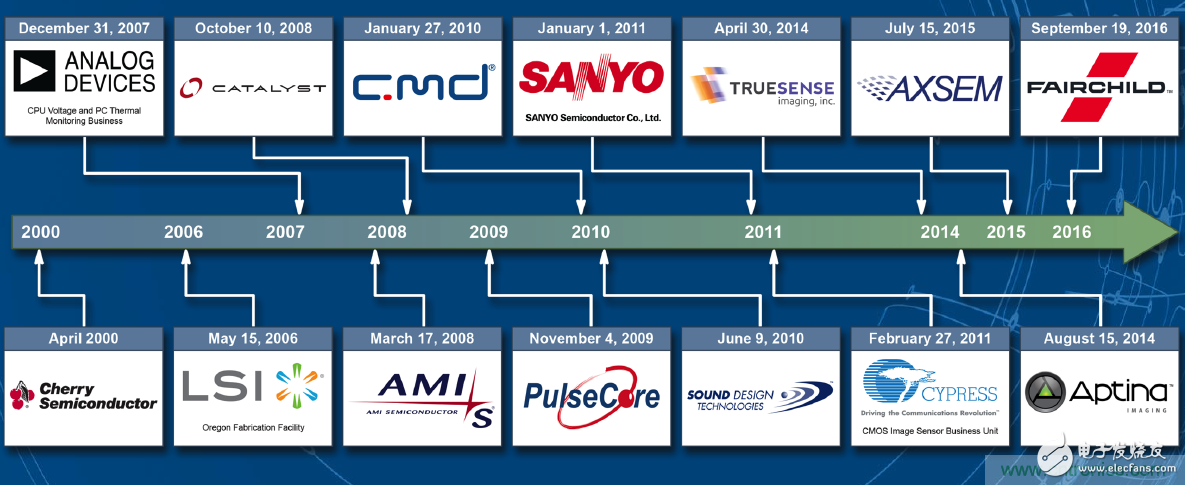
A few days ago, at the ON Semiconductor media meeting, AJ ElJallad, senior manager of wireless and wearable strategy and business development at ON Semiconductor, said that there are several key trends in wearable application development: 1. The product design cycle requirements are very fast and can be derived. Many different products, so ON Semiconductor has introduced a wearable reference design kit to accelerate product design; 2. Bluetooth Low Energy (BLE) is a major connectivity protocol for the wearable market, so the company is in this area with Nordic Semiconductor (in Bluetooth) Low-power technology is very well-known) to cooperate; 3. Wireless charging is an important function required by wearable devices, so ON Semiconductor developed a magnetic resonance (MR) wireless charging solution for wearable devices.
From the typical block diagram of the wearable device (Figure 3), in addition to the black part (such as MCU, memory, Bluetooth wireless communication, etc.), other green parts of the company have solutions and provide a compatible interface to the black part. According to ElJallad, many of these solutions/devices from ON Semiconductor are leading the industry, such as battery FETs, wireless and limited charging solutions, fuel gauges, AC-DC adapters, and PMICs. Among the wearable products, some have cameras, such as smart glasses, and ON Semiconductor offers products such as image sensors and autofocus drives. In addition, ON Semiconductor acquired the MEMS sensor product line through the acquisition of Fairchild.
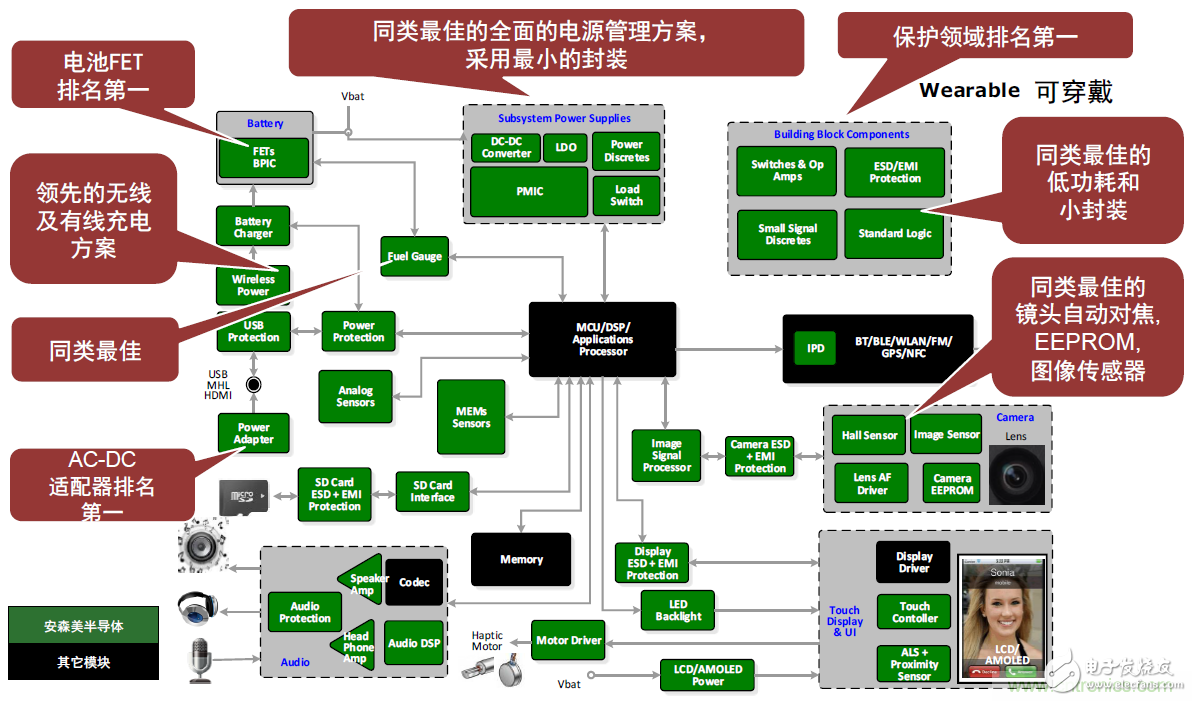
With a wearable full solution, ON Semiconductor launched the Wearable Development Kit WDK1.0 three weeks ago. It is the first scalable and flexible wearable reference design and development kit on the market that is compatible with the AirFuel Magnetic Resonance Wireless Charging Protocol. The reference design includes schematics and BoM, sample code, and the Smart App app, which can be downloaded via the Android PlayStore and AppleStore.
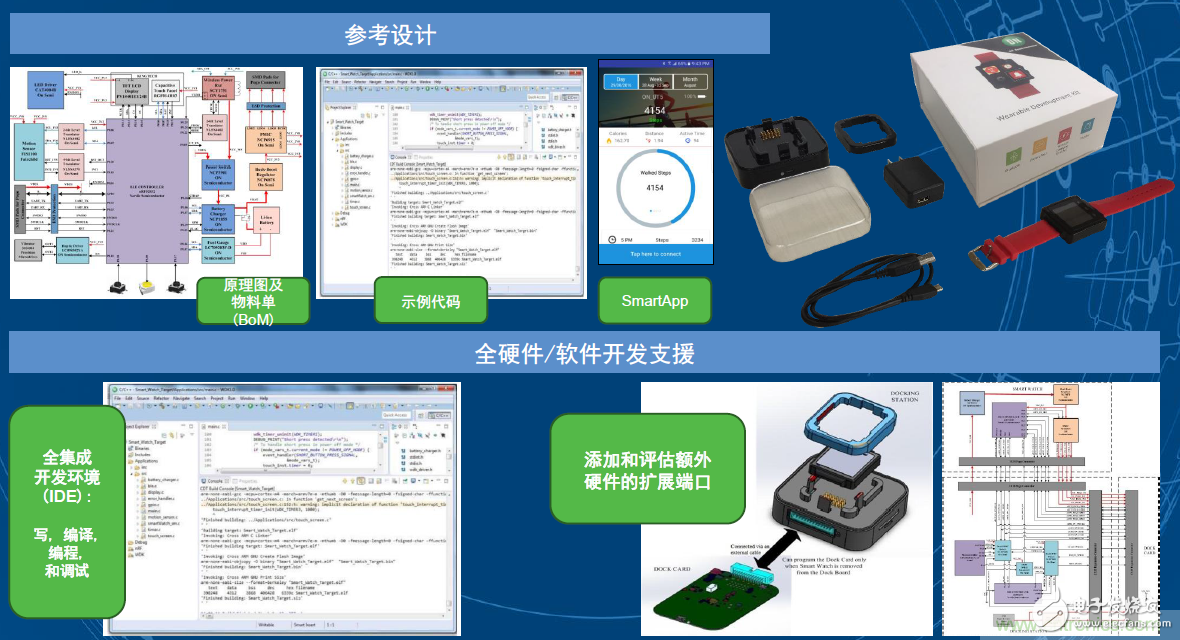
ElJallad said that the main controller of this wearable development kit uses Nordic's nRF52832, and all the surrounding devices are from ON Semiconductor, such as gyroscopes, accelerometer MEMS sensors, wireless charging and wired charging.
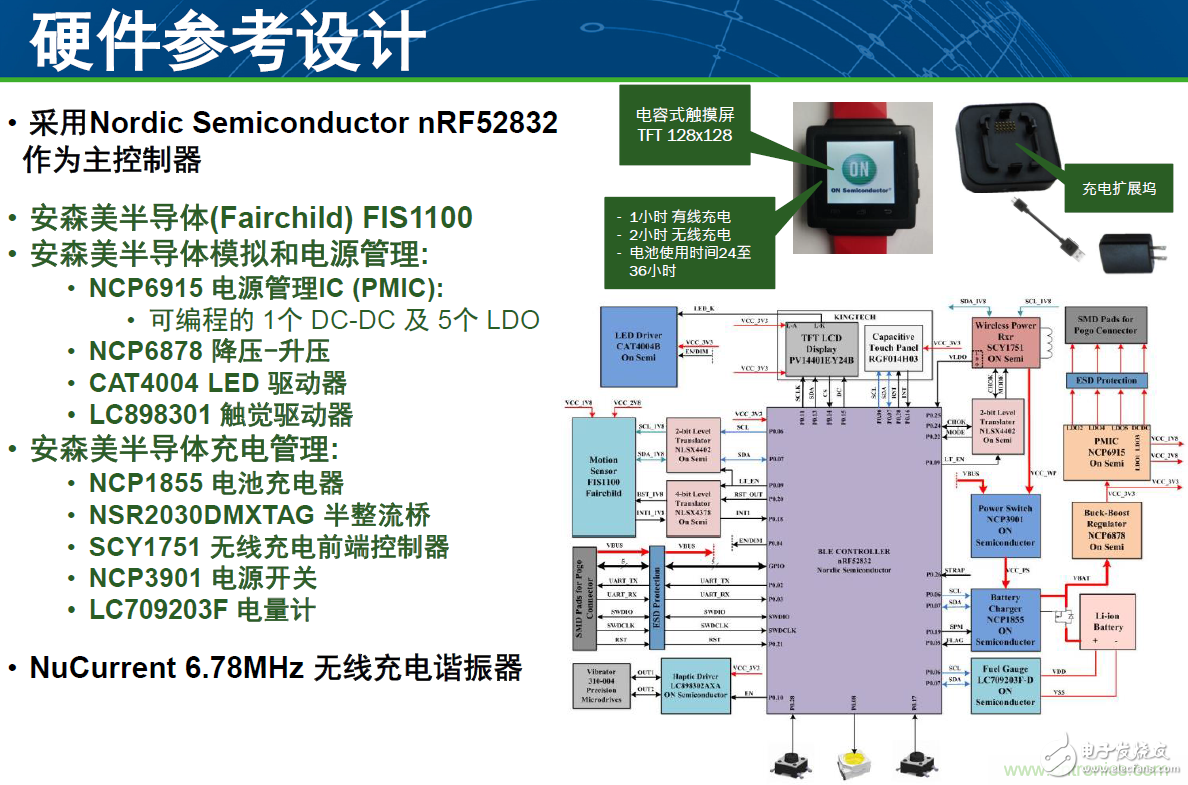
WDK 1.0 has an integrated development environment (IDE) that can be programmed, compiled, and debugged by connecting to a computer. At the same time, it comes with an expansion port that can be used to add and evaluate hardware. ElJallad revealed that through this development kit, we can design different types and different grades, such as low-end smart jewelry, high-end smart watches / smart glasses (including 3G mobile connection), etc. (remove the display of smart watches, plus On the camera, that is smart glasses).
In addition, for battery life, depending on the hardware design, its battery life is between 24 hours and 36 hours. If the charging is wired (charged through the dock), the charging time is 1 hour, and the wireless charging is 2 hours.
For the AirFuel protocol, ON Semiconductor believes this agreement will be the wireless charging standard for future handheld/wearable devices. ElJallad said that from the wireless charging ecosystem, we hope to use a technology to achieve a variety of device charging. The charging power of the AirFuel magnetic resonance protocol is suitable for wearable devices all the way to laptops. If the AirFuel protocol is used for wearable devices, mobile phones, laptops, etc., only one set of charging boards can support multiple Charging of the device.
(In addition, the wireless charging board for live demonstrations comes from NewVastek. ElJallad revealed that the charging board also uses ON Semiconductor's PMIC, but it is not included in this kit. This charging board is characterized by what is being placed on the charging device. The location can be charged.)
With the Smart App and smart watch pairing on your phone, we can view basic motion data, including walking steps, calories burned, and walking distance. In addition, the Smart App can control smart watch functions such as motion sensor switches, tactile sensor switches, vibration functions, clock face analog/digital display switching, and LCD brightness adjustment. In addition, software function control, such as phone notification, SMS notification and wireless download, as well as custom functions such as gender and identity display.
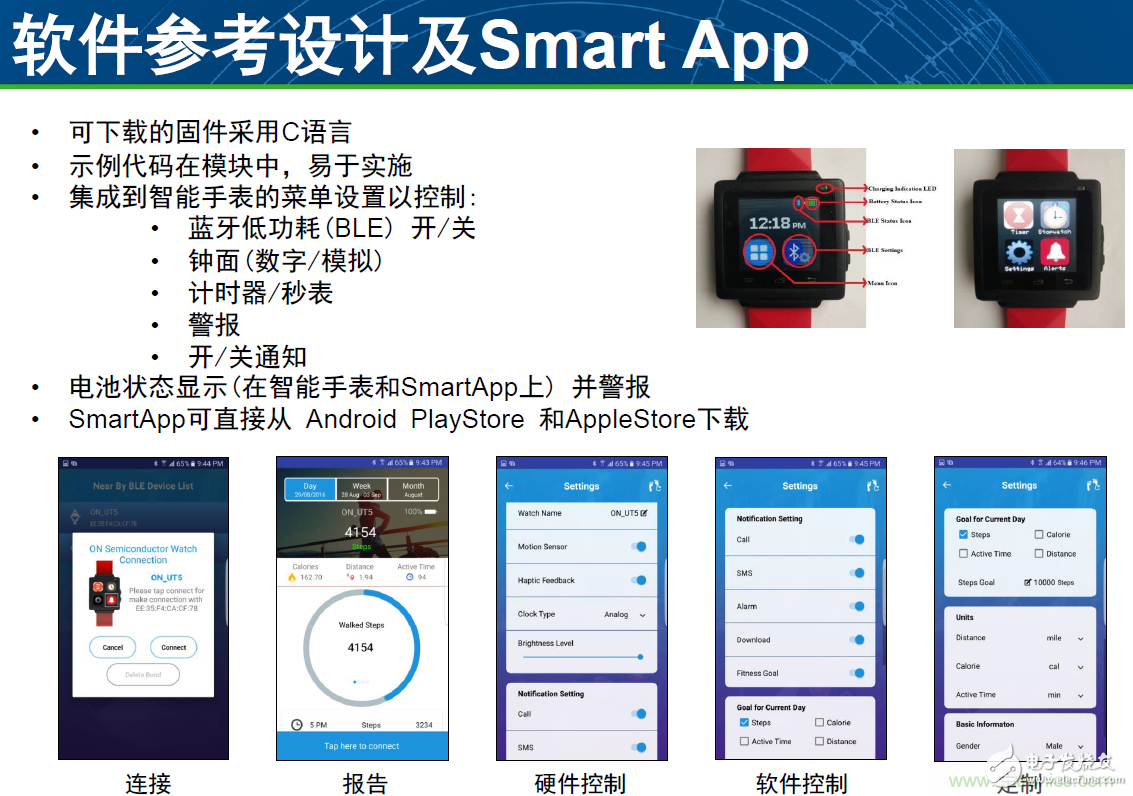
Figure 6: WDK1.0 Software Reference Design and Smart App.
ElJallad revealed that with this development kit, we can write programs for three ARM cores. The first is Nordic's BLE MCU. The second is the Bluetooth low energy MCU in the docking station, which can be used for IoT expansion. The third is to program the application processor through an expandable port, such as MediaTek or Qualcomm's MCU.
For hardware development, the reference design is unique in that it has an extended interface that can be used to add the required components. There are five GPIOs and one PMIC power rail in the docking station, which can be used to expand the design. In addition, the power of the expansion port can also be adjusted by programming from 1.8V to 5V.
For the sale of this development kit, ElJallad said that Mouser and Digi-Key are available now, with a suggested price of $500, which anyone can buy. Subsequent packages will also increase sales channels such as Arrow and Avnet.
Finally, when asked, “There are motion sensors in our mobile phones, we can use the mobile phone to achieve step counting. So, can wearable designs add more special sensors to achieve differentiated functions?†ElJallad said, Fairchild's motion sensor includes a temperature sensor and also includes an altitude engine. In the future, the kit will also include heart rate sensors and GPS. And, although the WDK 1.0 does not have these sensors, developers can add new sensors themselves by extending the interface.
In addition, for SoC/SiP to achieve a wearable design approach, ElJallad said that the SoC approach is suitable for more specialized applications, and SiP can develop a range of products to meet the needs of flexibility and scalability. This is the future development trend of wearable devices and the roadmap for the future of ON Semiconductor.
LED Furniture Feature:
1. Polyethylene (PE) is a kind of thermoplastic material, not easy to broken, suitable for long time delivery
2. Non toxic, safe for human healthy
3. Rechargeable battery and remote control
4. Multi-colors change & color selection
5. Anti UV & waterproof
6. Adopt the EPISTAR led chip to ensure the color quality and life time
7. Certificate: CE, ROHS, etc
8. Warranty: 1 year
Bar, nightclub, golf club, disco, KTV, bistro, patio, pub, hotel, restaurant, cafe, coffee shop, tea house, plaza, garden, entertainment park, amusement park, home, villa, swimming pool, wedding, party, events, decoration, design, project, rental/hire,all are with waterproof.
Glow Furniture,Illuminated Furniture,Led Illuminated Furniture,Illuminated Garden Furniture
KIWA ELECTRONIC (HK) INDUSTRIES CO.,LTD , https://www.kiwahk.com